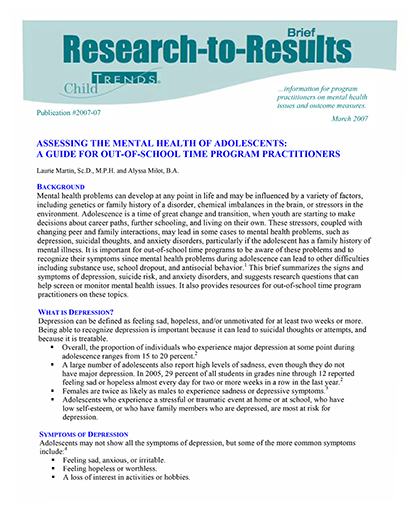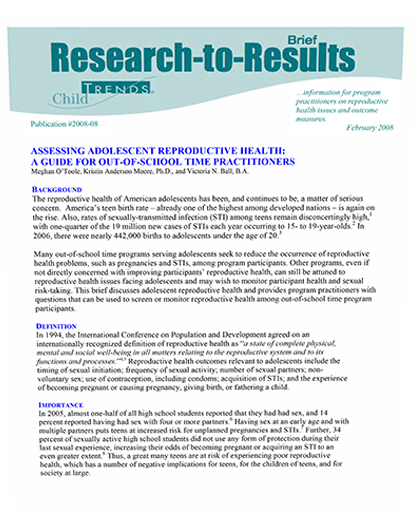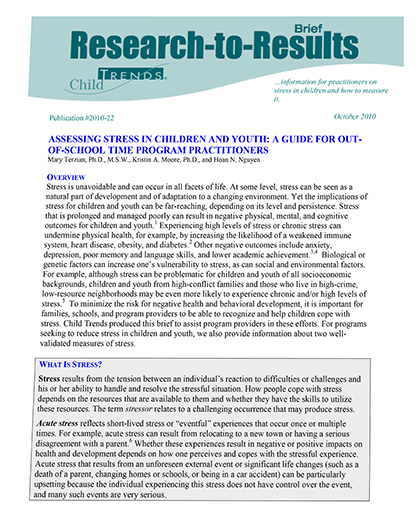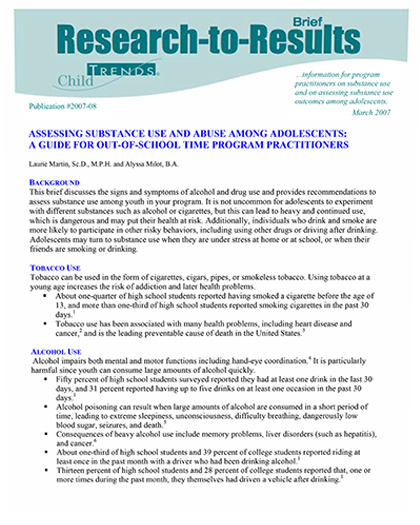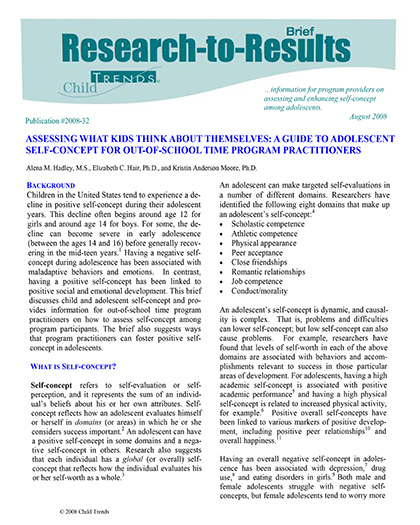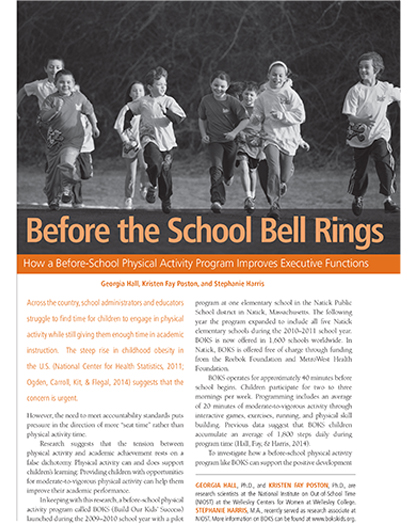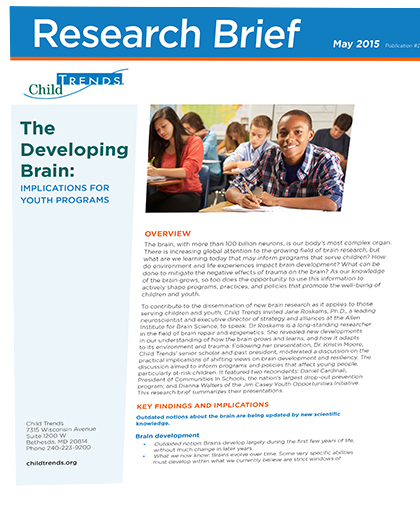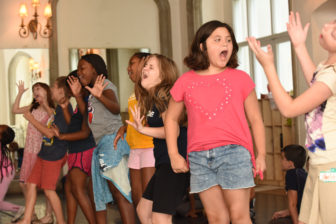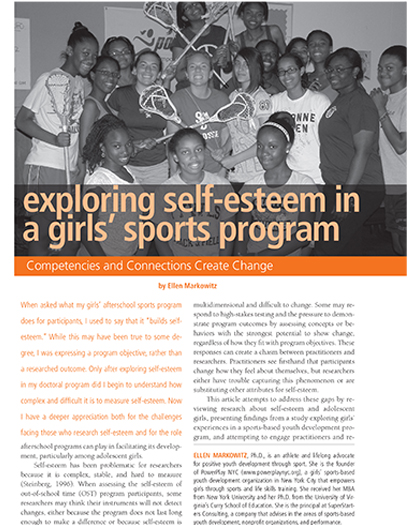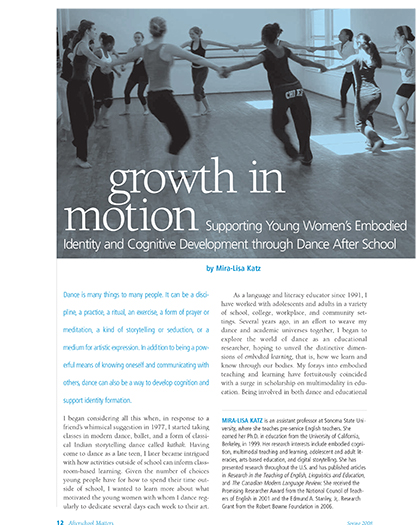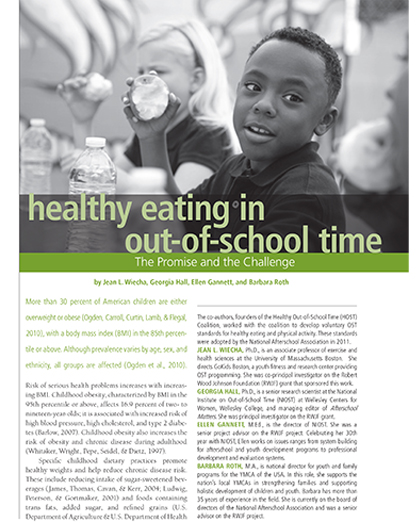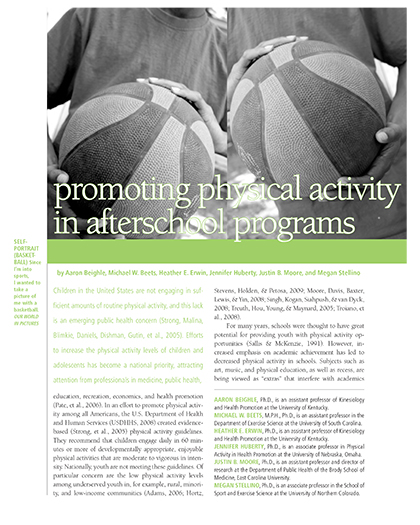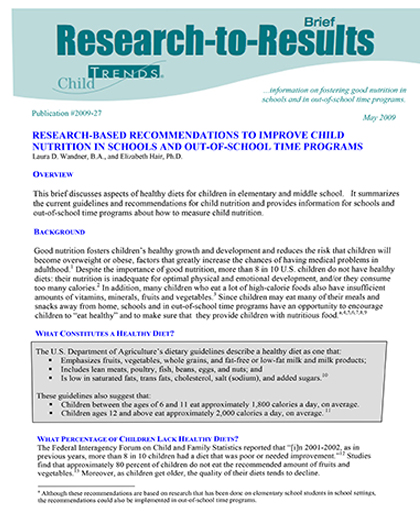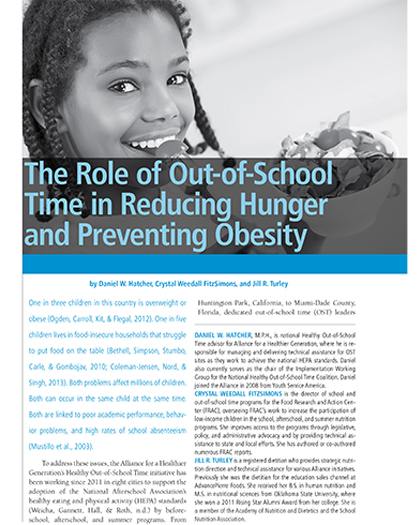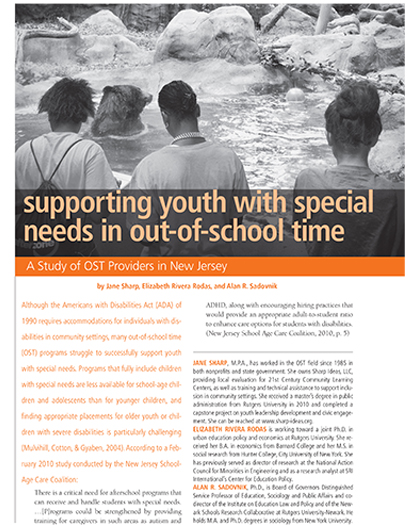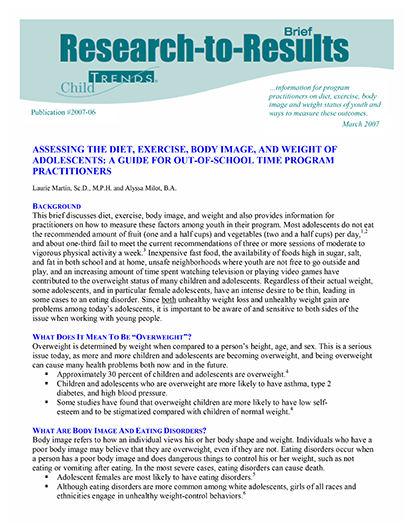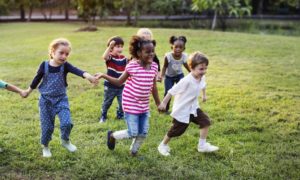
Explore & Download These Resources
Assessing the Mental Health of Adolescents: A Guide for OST Practitioners.
This brief summarizes the signs and symptoms of depression, suicide risk, and anxiety disorders in adolescents, and suggests research questions that can help screen or monitor mental health issues. It also provides resources for out-of-school time program practitioners on these topics.
Assessing Adolescent Reproductive Health: A Guide for OST Practitioners.
Many out-of-school time programs serving adolescents seek to reduce the occurrence of reproductive health problems, such as pregnancies and STIs, among program participants. This brief discusses adolescent reproductive health and provides program practitioners with questions that can be used to screen or monitor out-of-school time program participants.
Assessing Stress in Children.
Children and youth from high-conflict families and those who live in high-crime, low-resource neighborhoods may be even more likely to experience chronic and/or high levels of stress. To minimize the risk for negative health and behavioral development, it is important for families, schools, and program providers to be able to recognize and help children cope with stress. This brief can assist program providers seeking to reduce stress in children and youth.
Assessing Substance Use and Abuse Among Adolescents: A Guide for OST Practitioners Bibliography.
It is not uncommon for adolescents to experiment with different substances such as alcohol or cigarettes, but this can lead to heavy and continued use, which is dangerous and may put their health at risk. This brief discusses the signs and symptoms of alcohol and drug use and provides recommendations to assess substance use among youth in OST programs.
Assessing What Kids Think About Themselves: A Guide to Adolescent Self-Concept.
Having a negative self concept during adolescence has been associated with maladaptive behaviors and emotions. In contrast, having a positive self-concept has been linked to positive social and emotional development. This brief discusses child and adolescent self-concept and how to assess self-concept among program participants and ways that program practitioners can foster positive self concept in adolescents.
Before the School Bell Rings: How a Before-School Physical Activity Programs Improves Executive Functions.
This article describes a three year study that investigated how a before-school physical activity program can support positive development and school-related outcomes. In particular, the study examined whether program participation was associated with “executive functions” such as working memory and the ability to shift between tasks.
Developing Brain Implications for Youth Programs.
The current research on the brain has expended in the past few years, and as our knowledge of the brain grows, so too does the opportunity to use this information to actively shape programs, practices, and policies that promote the well-being of children and youth. This brief provides a review of new brain research as it applies to those serving children and youth,
Jumpin’ Jaguars. Encouraging Physical Activity After School
OST programs can be valuable spaces to engage children and youth in physical activity. This article To add to this discussion of the effectiveness of afterschool physical activity programs, we developed, implemented, and studied a physical activity program called Jumpin’ Jaguars for elementary-aged children. This paper describes the implementation of Jumpin’ Jaguars in one school, articulates findings on its physical activity outcomes, and offers recommendations for improving physical activity levels in afterschool programs.
Exploring Self-Esteem in a Girls Sports Program.
Self-esteem is notoriously difficult to articulate and measure. This article attempts to address these gaps by reviewing research about self-esteem and adolescent girls, presenting findings from a study exploring girls’ experiences in a sports-based youth development program, and attempting to engage practitioners and researchers in new conversations about self-esteem and how we assess it.
Growth in Motion. Supporting Young Women’s Embodied Identity and Cognitive Development Through Dance After School.
This is a study of “embodied learning and development—growth in motion—” at two community-based dance studios serving children, youth, and adults. It highlights the perspectives of young women to reveal the unique multimodal nature of dance; Auditory, kinesthetic, spatial, musical, tactile, gestural, and linguistic learning, as well as attitudinal and cognitive benefits.
Healthy Eating in Out-of-School-Time.
Healthy eating habits are critical to address the epidemic of childhood obesity and diabetes in U.S. children. OST can provide a space to teach and model healthy nutrition, and an essential first step in determining how to address this issue involves understanding the perspectives of individuals who manage key OST organizations. This study explored healthy eating concepts among OST program administrators, their perception of the importance of the childhood obesity epidemic in relation to their mission. It also explored perceived barriers to serving healthful foods and the potential utility of guidelines and other managerial supports in helping programs adopt healthy eating practices
Promoting Physical Activity in Afterschool Programs.
Children and youth need physical activity, and as the school day is increasingly used for academics, the OST is a key space in which to promote these activities. Evidence supporting the effectiveness of afterschool programs in promoting physical activity is beginning to surface; however, findings are mixed due to the methodological weaknesses in many studies. This review of studies of physical activity in afterschool programs found that current research lacks a detailed description of the intervention. For example, the content of staff training, the environment, and the activities offered.
Research Based Recommendations to Improve Child Nutrition in Schools and OST.
This research brief discusses aspects of healthy diets for children in elementary and middle school. It summarizes the current guidelines and recommendations for child nutrition and provides information for schools and out-of-school time programs about how to measure child nutrition.
Role of Out-of-School-Time in Reducing Hunger and Preventing Obesity.
This article explains the link between childhood hunger and obesity, describes the importance of high quality nutrition education, highlights evidence of success from the Healthy Out-of-School Time Initiative, and discusses ways to engage youth in implementing the HEPA standards.
Supporting Students with Special Needs in Out-of-School Time.
A study of 421 New Jersey OST providers found that professional development and experience were correlated with positive experiences with inclusion, whereas education, position, size of program, or the type of agency were not. This finding and other interesting correlations lead the authors to recommend that individuals and groups supporting OST programs provide professional development to help staff work with children with special needs.
Technology & Fitness in Afterschool.
This handout provides a variety of low-cost and free opportunities to use technology in afterschool programs, including free apps.
Assessing the Diet-Exercise Body-Image and Weight of Adolescents: A Guide for OST Practitioners.
This brief discusses diet, exercise, body image, and weight and also provides information for practitioners on how to measure these factors among youth in their programs.




